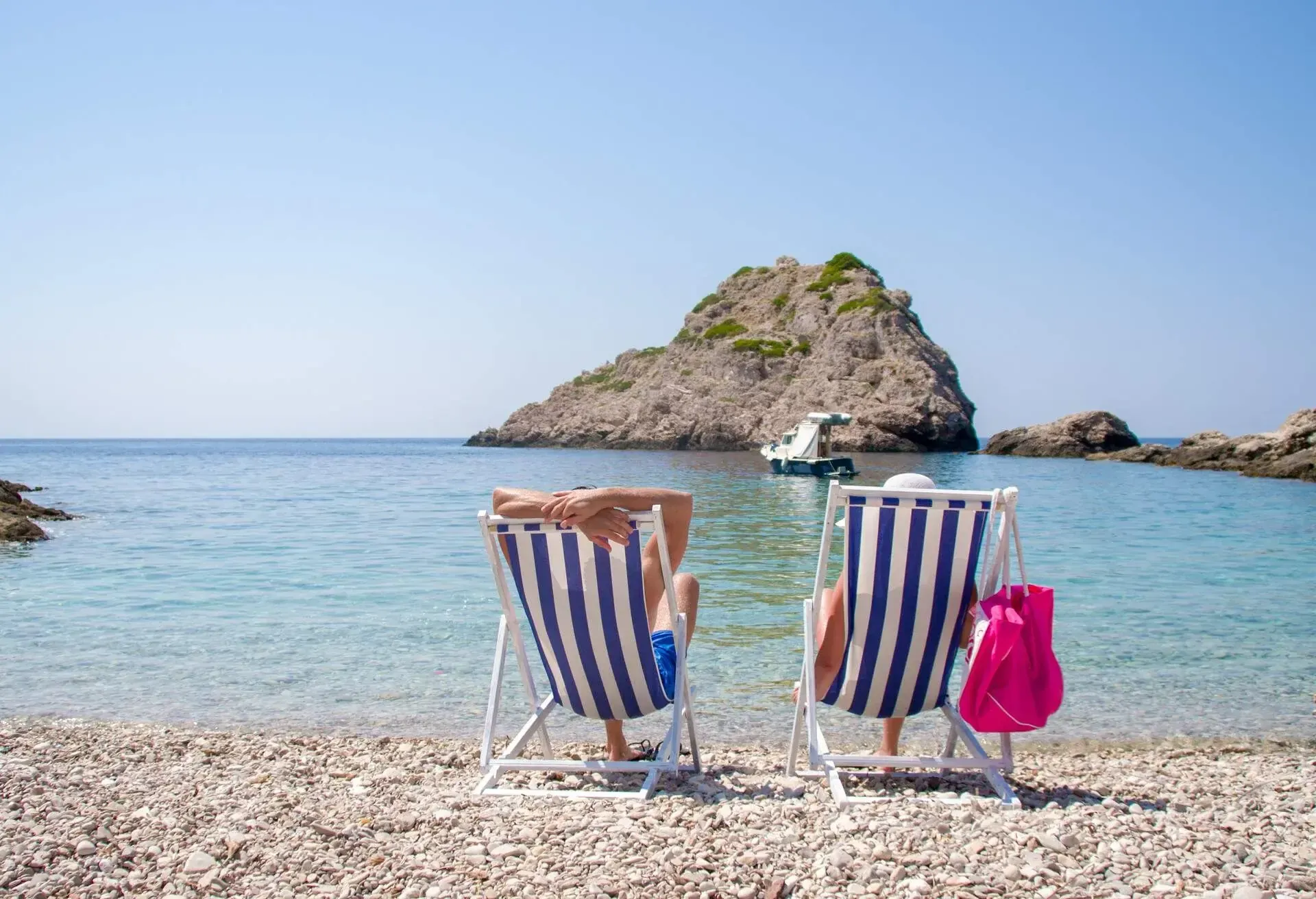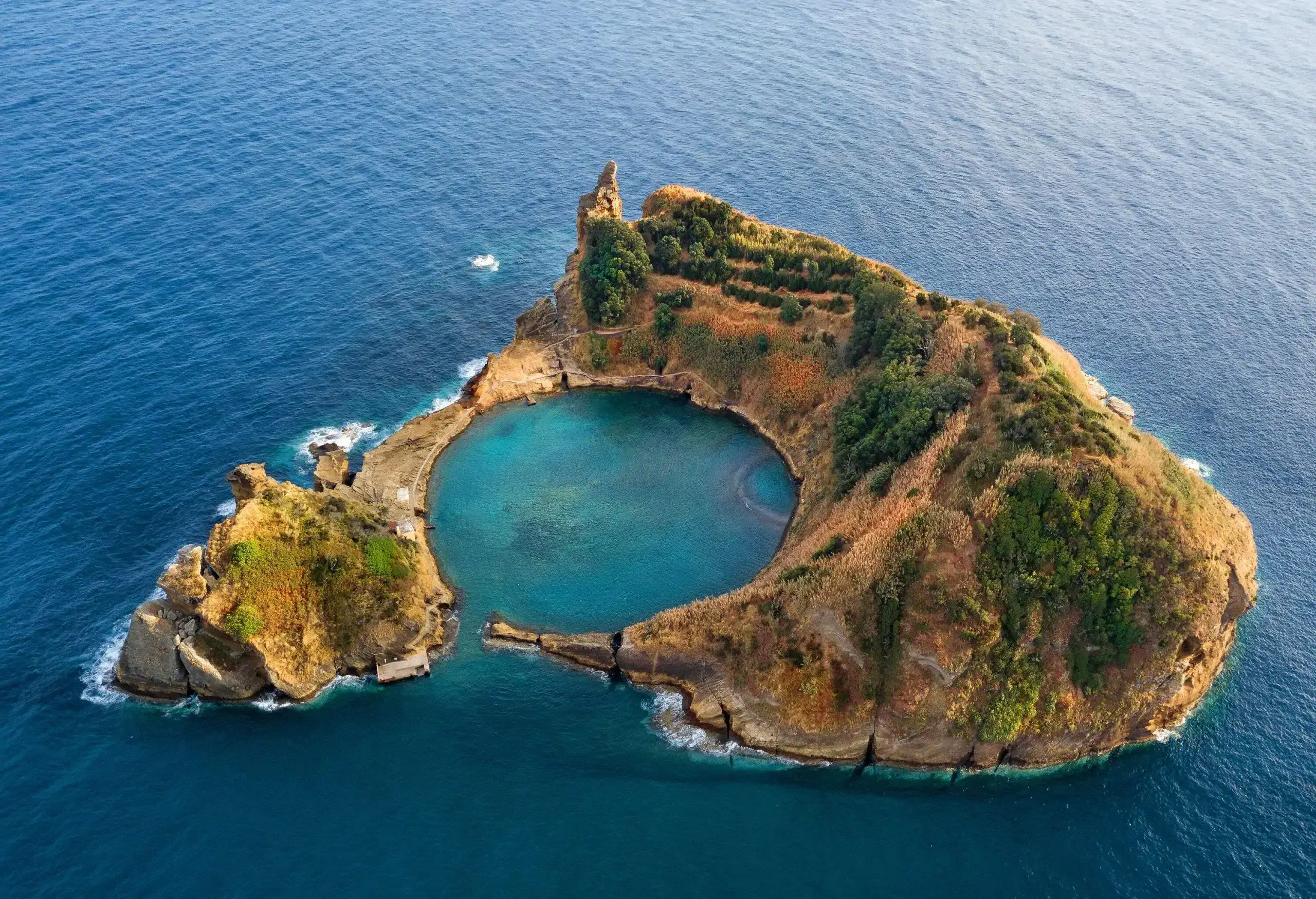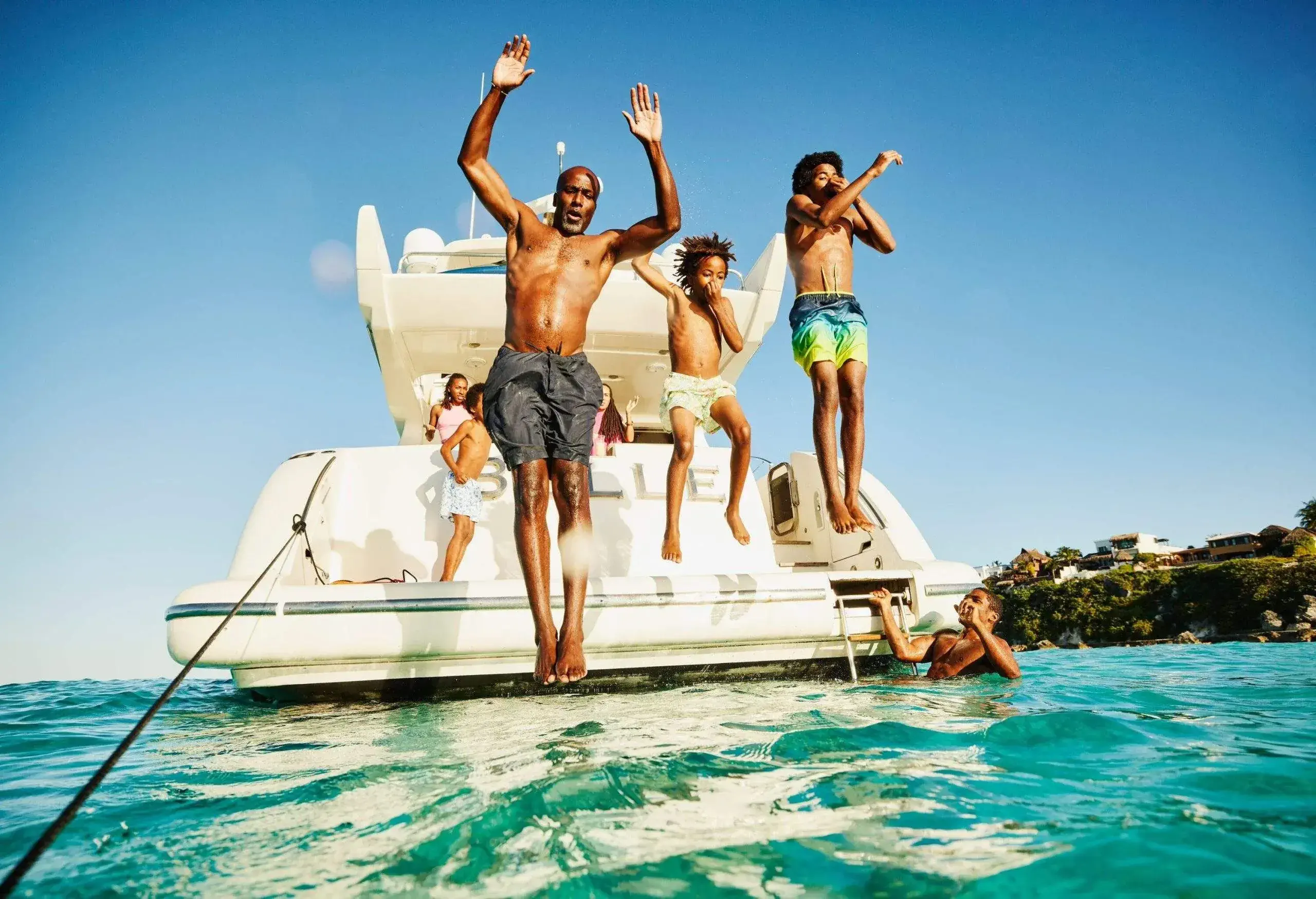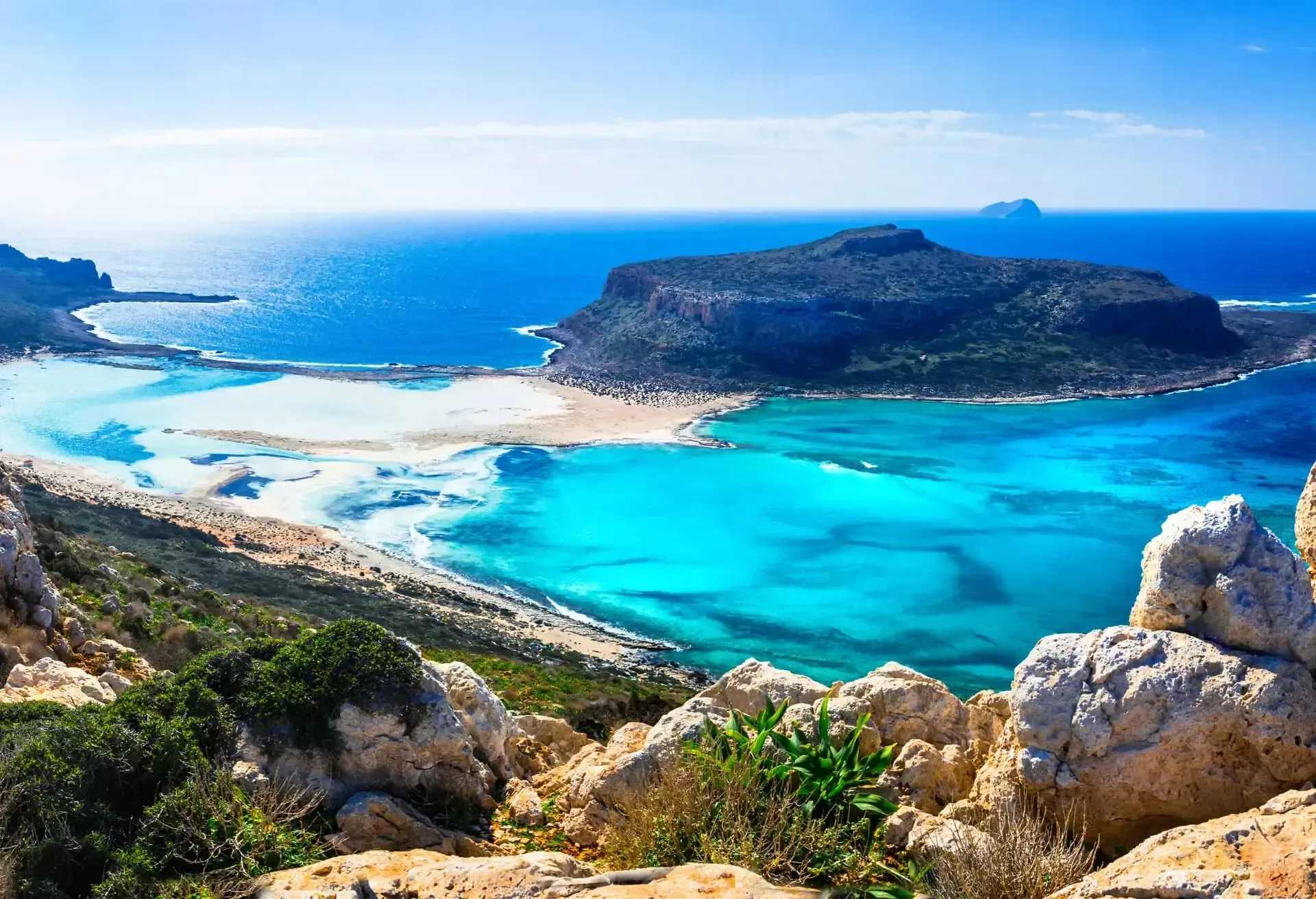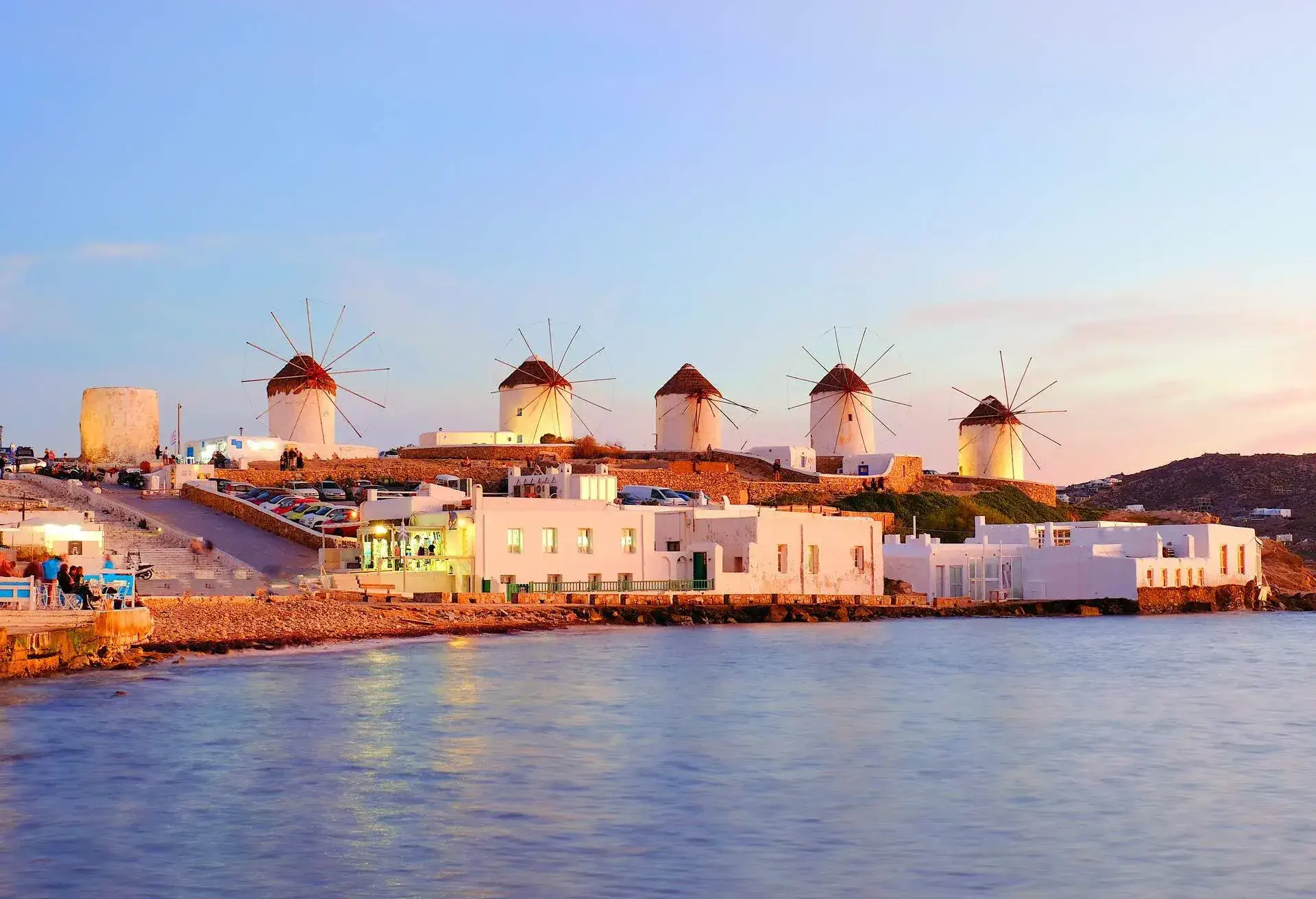From the bustling beaches of Hvar to the remote shores of Vis, the islands of Croatia have something for every traveller. You’ll find gorgeous stretches of wilderness, sunny beaches, local history, and fresh produce on every island. The best islands in Croatia can be found all along the coast, with ferry trips to most islands departing daily. Most of the islands are best visited in the shoulder seasons of spring and autumn due to the high heat and many tourists in summer; however, if you’re visiting Croatia for a party atmosphere, don’t be afraid to opt for the busier crowds.
The best islands in Croatia: Hvar
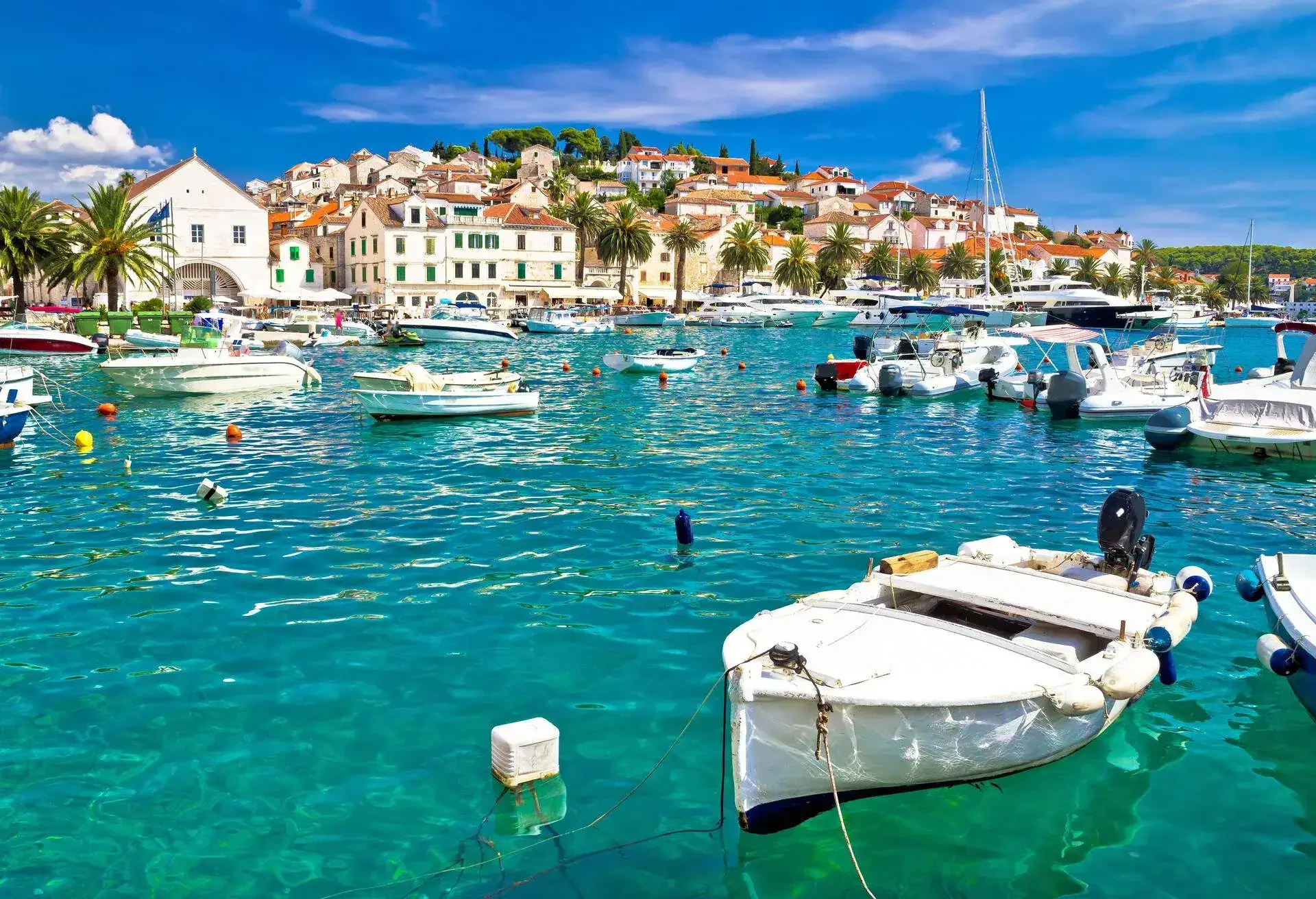
Hvar is Croatia’s most well-known and popular island, offering luxury options frequented by celebs from around the world as well as wallet-friendly stays and attractions for holiday-makers on a budget. It’s ideally situated for island hopping, close to surrounding islands like Brac and Korcula, and gets more sunshine throughout the year than any other Croatian island.
With that consistent sunshine and the fact that Hvar is such a popular tourist destination, the best time to visit is usually in the shoulder seasons of spring and fall, between April and May/early June, and between September and October. During these times, the water is still warm and the weather is still pleasant but the island isn’t as crowded as during the peak months of June to August.
Things to do in Hvar
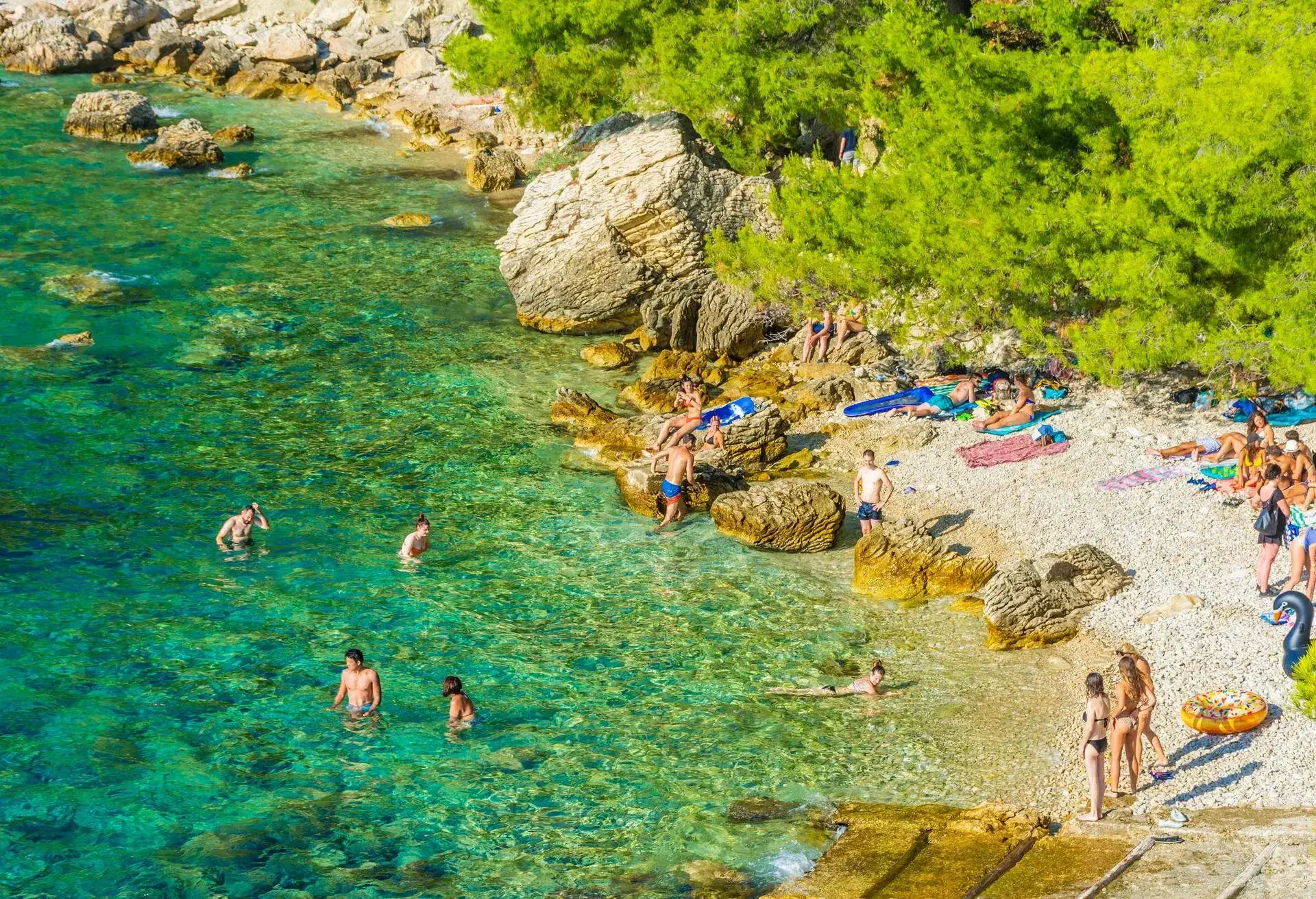
Hvar has some gorgeous beaches to explore, including Dubovica Beach, one of the most popular, and Malo Zarace Beach, which tends to be much quieter. To get incredible views of the island, head to the Spanjola Fortress, which sits atop a 100-metre high hill that overlooks Hvar Town and dates back to the 13th century. Hvar gets sunshine throughout most of the year, which makes it ideal for growing many plants, and it is well-known for its beautiful lavender fields, mostly located around the towns of Zastrazisce, Gdinj, and Bogomolje.
Insider tip: Hvar is also well known for its olive oil and there is a range of tasting tours popular with tourists. But not many know about the beautiful lone olive tree that grows near Zastrazisce, which some experts date back 2,000 years.
Places to stay in Hvar
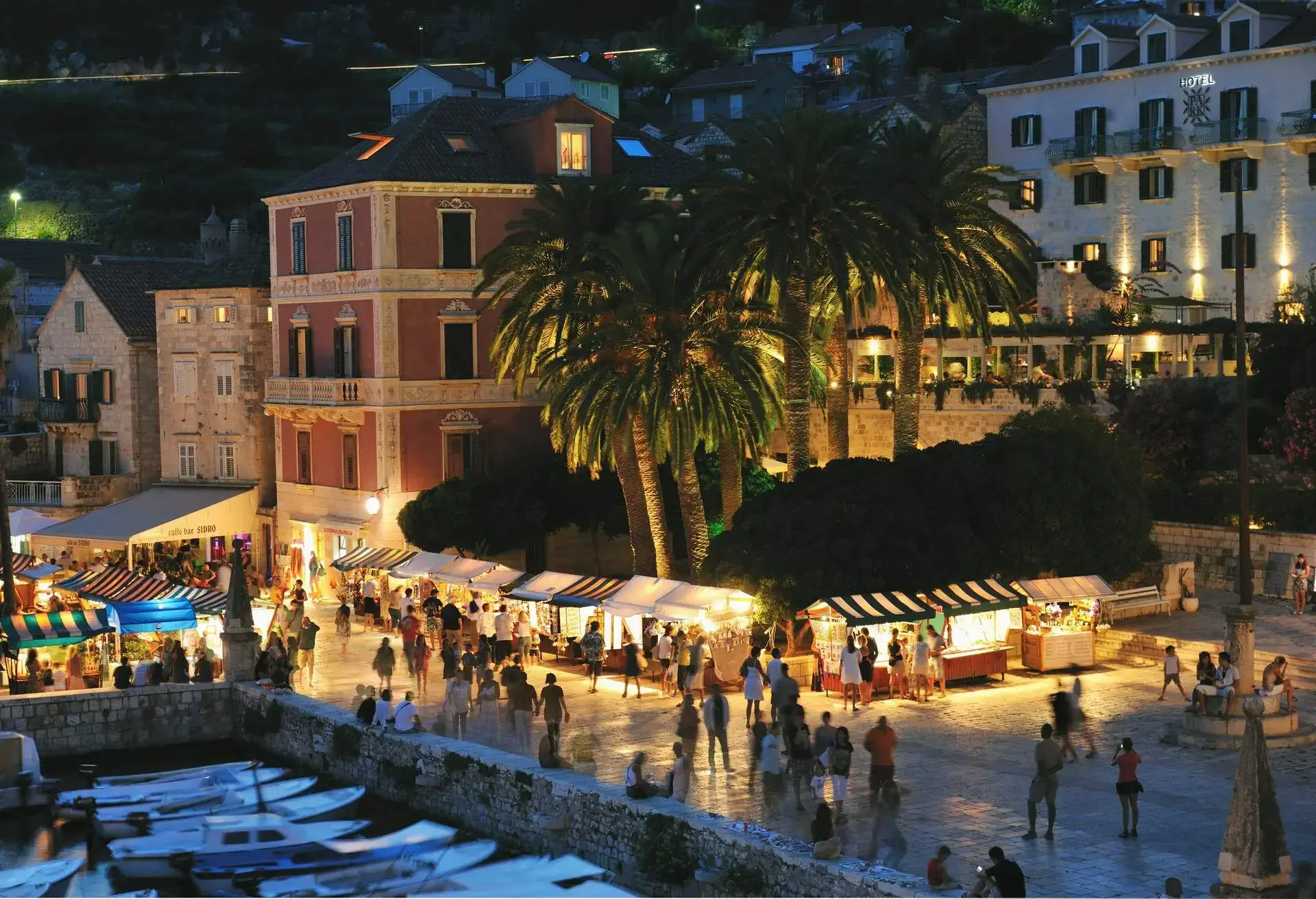
There are some great hostels in Hvar, popular with backpackers and solo travellers, such as Hvar Out and White Rabbit Hostel, which both have great locations. For a more luxury feel, try the five-star Heraclea House or Adriana Hvar Spa Hotel, which has a rooftop bar that’s perfect for sunset views. You’ll also find plenty of apartments and guesthouses available, many of which offer gorgeous coastal views.
The best islands in Croatia: Sipan
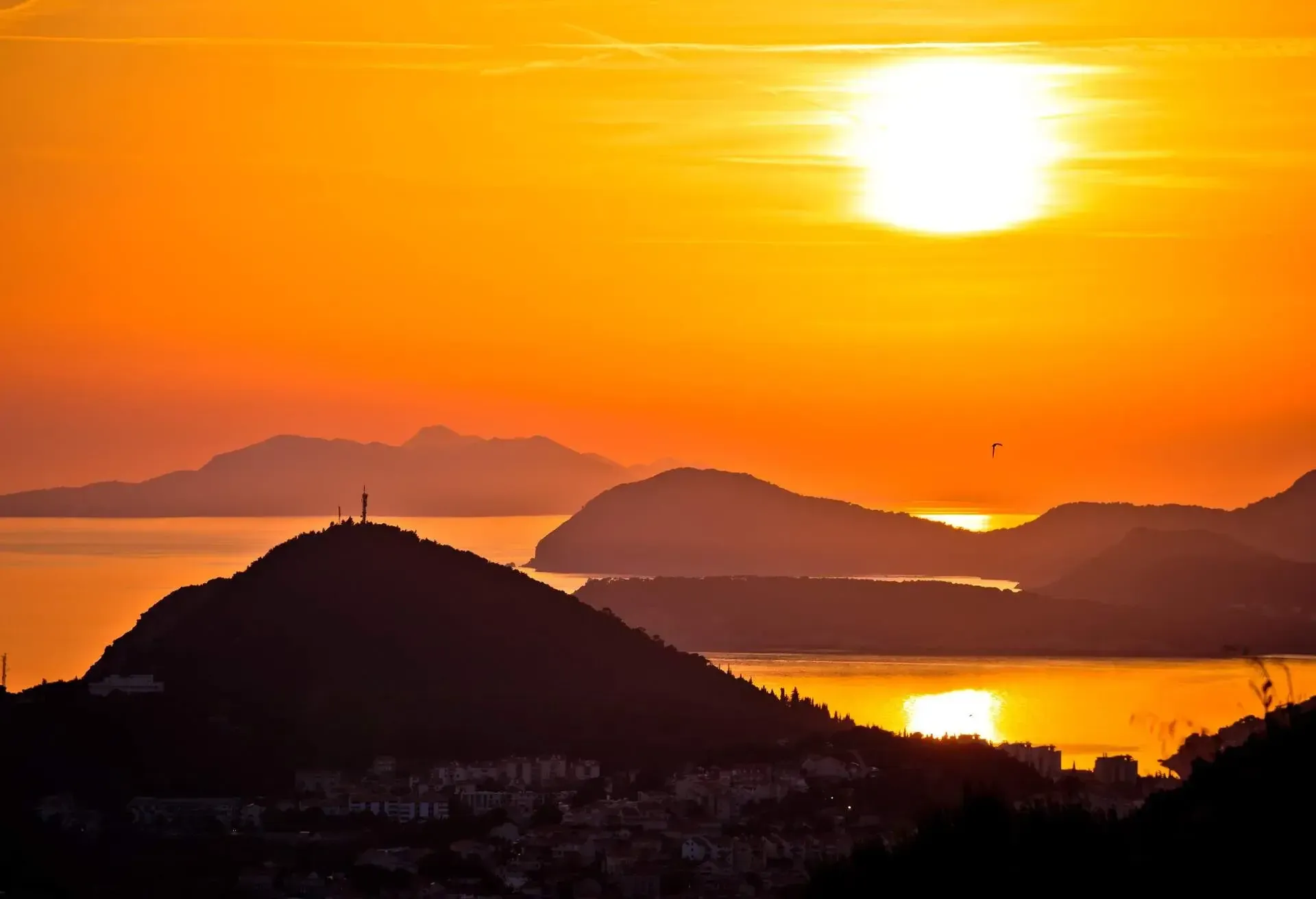
Sipan is part of the Elafiti Archipelago, which sits just off the coast of Dubrovnik. You can comfortably visit the island any time between May and October, with the most crowds in July and August. It can get very hot in July and August, while spring and autumn are milder. With a daily ferry from Dubrovnik that takes about 1h 20min, you can easily visit Sipan as a day trip from the mainland, but you’ll get the most out of the island by staying at least one night. Sipan is a great place to visit with kids, with safe hiking trails, beaches within easy walking distance, and a generally quiet atmosphere with relatively little nightlife.
Things to do in Sipan
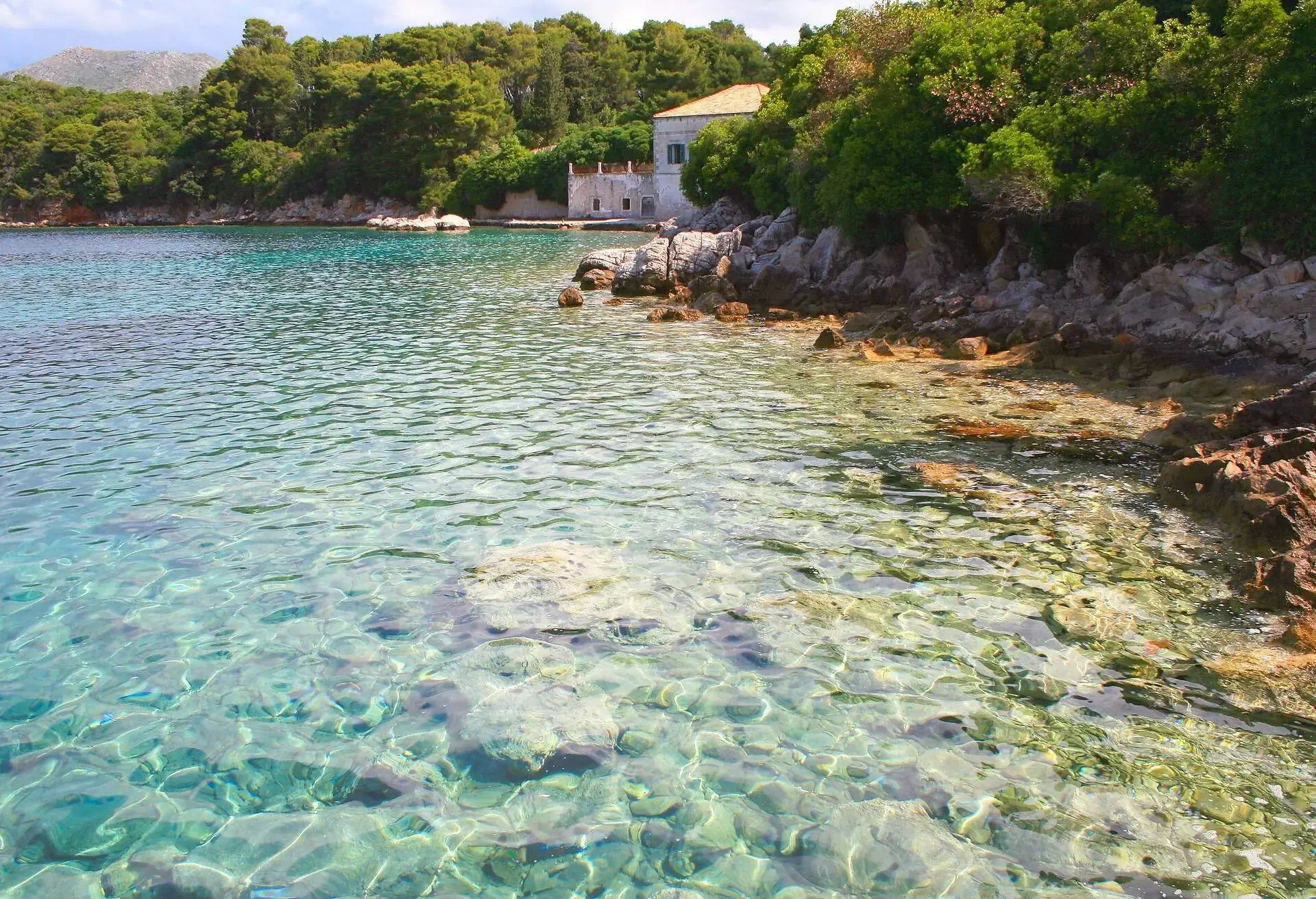
Sipan has some excellent hiking and cycling trails, and most are gentle to moderate, so even beginner hikers can take in the island’s beautiful nature. A popular route takes you from Sipanska Luka, one of the island’s main villages, to Velji Vrh, the highest point on the island, providing stunning views of the whole Elafiti Archipelago. While you’re staying on Sipan, be sure to check out at least one of the ice cream shops – you’ll find plenty of options near the beaches.
Insider tip: The special character “s” in the Croatian alphabet is pronounced “sh”, so “Sipan” is pronounced closer to “shee-pan” than “see-pan”.
Where to stay on Sipan?
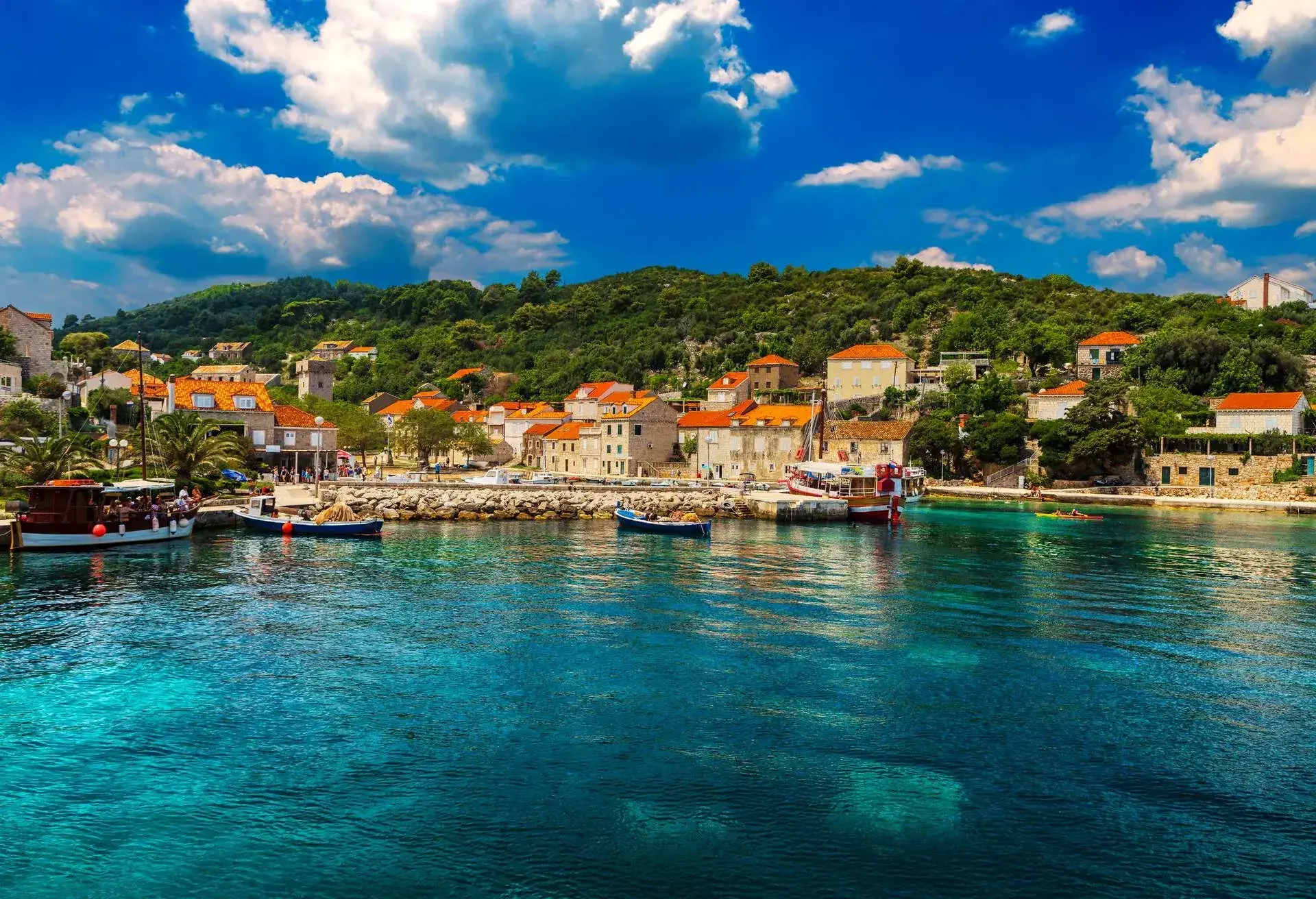
There are two main villages on Sipan: Sipanska Luka and Sudjuradj. Each village only has one main hotel: Hotel Sipan in Sipanska Luka and Hotel Bozica in Sudjuradj. However, there’s no shortage of places to stay on the island, with plenty of apartments available for short-term stays and B&Bs throughout the island. You could also choose to stay on the mainland, at Dubrovnik, or on one of the nearby islands like Lopud, which has an RMH Wellness Resort, if you prefer to visit Sipan as a day trip.
The best islands in Croatia: Brac
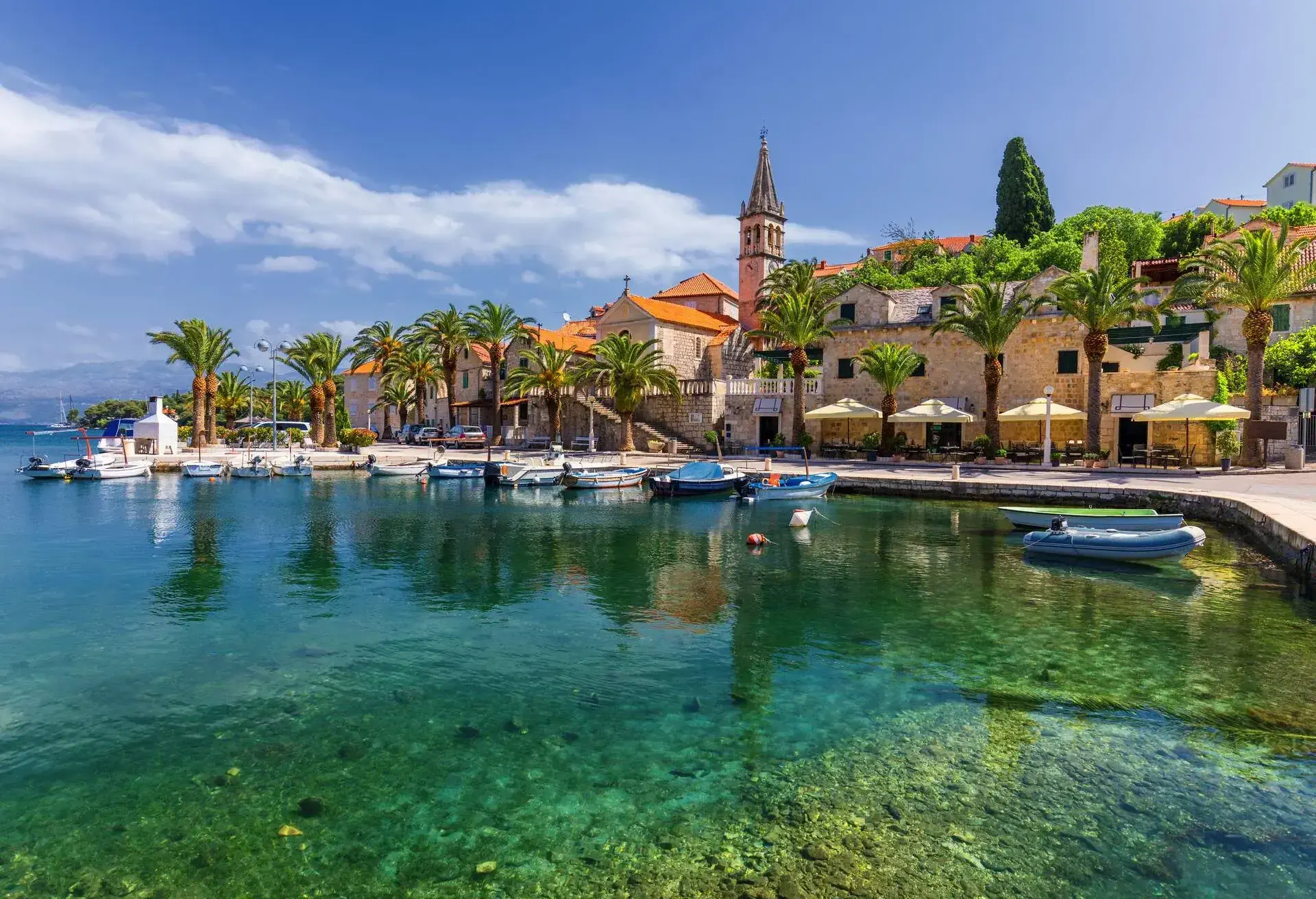
Brac is the longest island in the historic region of Dalmatia and is very close to the mainland city of Split, Croatia’s second-largest city. The main arrival point is the island’s capital of Supetar, which boasts beautiful beach resorts. Visitors can also head to the smaller towns of Bol for beautiful beaches, Skrip for historic interests, Milna for farms and vineyards and Pucisca for beautiful Renaissance-era homes on the waterfront. The weather in Brac is nicest during the summer, but this is also when the island is the busiest, so visiting at the edges of the peak season in June and September can be better for quieter streets and slightly cheaper prices.
Things to do in Brac
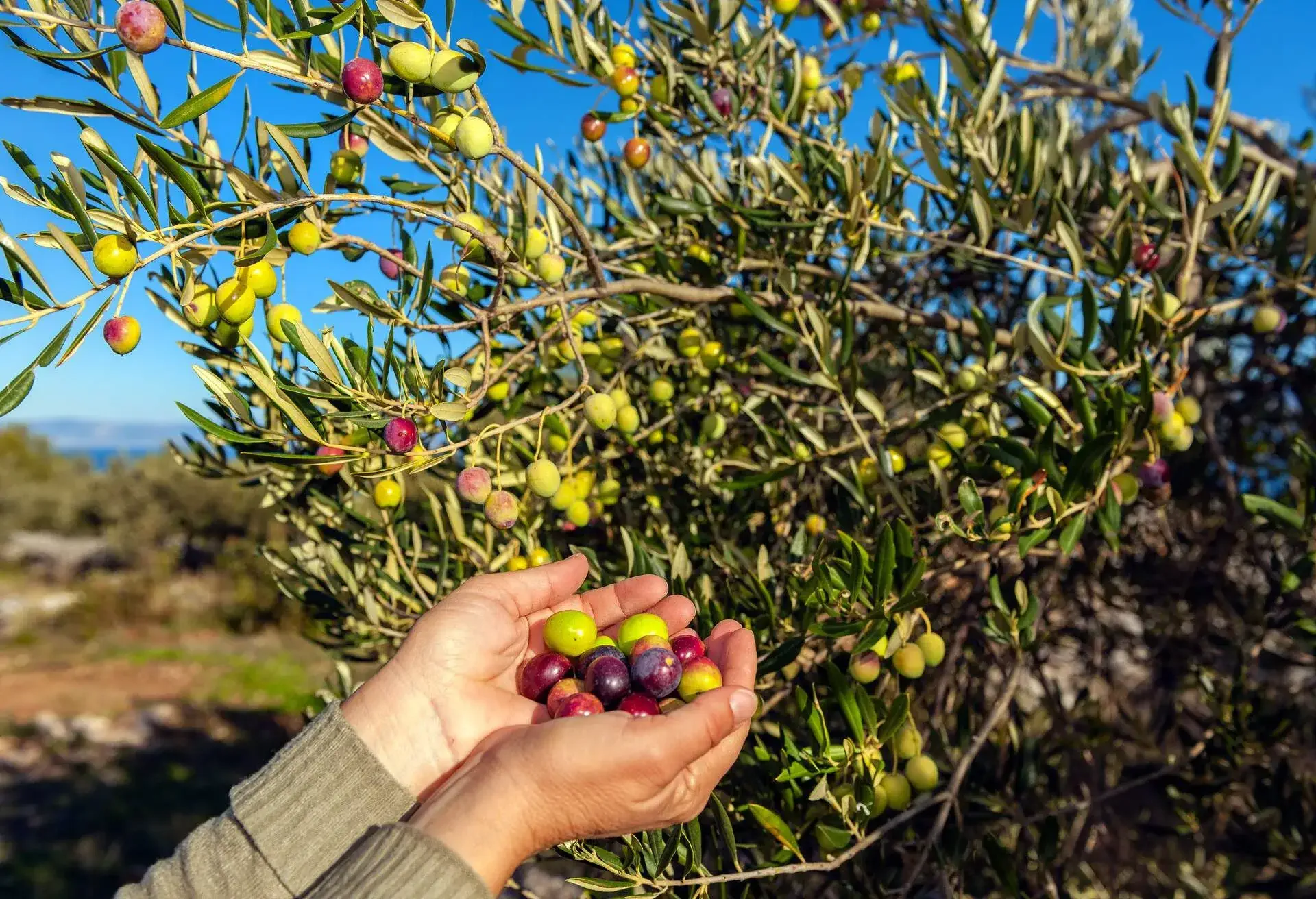
Olive oil is made on many of Croatia’s islands, but Brac is generally considered the main olive island, with over half a million olive trees and an Olive Oil Museum, in Skrip. Be sure to visit the museum and check out the walking trails that take you through the island’s olive groves. Bol is well known for its beach, Zlatni Rat, a soft, pebble beach renowned for its picturesque beauty and ideal conditions for windsurfing and other water activities.
To travel back in time, head to Blaca Monastery, which dates back to the 16th century and holds over 8,000 books and many more fascinating artifacts; opt for a guided tour to make sure you see everything.
Insider tip: Looking for a truly unique attraction? Look no further than the House in a House, in Bol, which is literally a house inside the walls of another house. It was born from the dispute between a wealthy family who wanted to build a large palace and the owner of the small house that stood in their way.
Where to stay on Brac
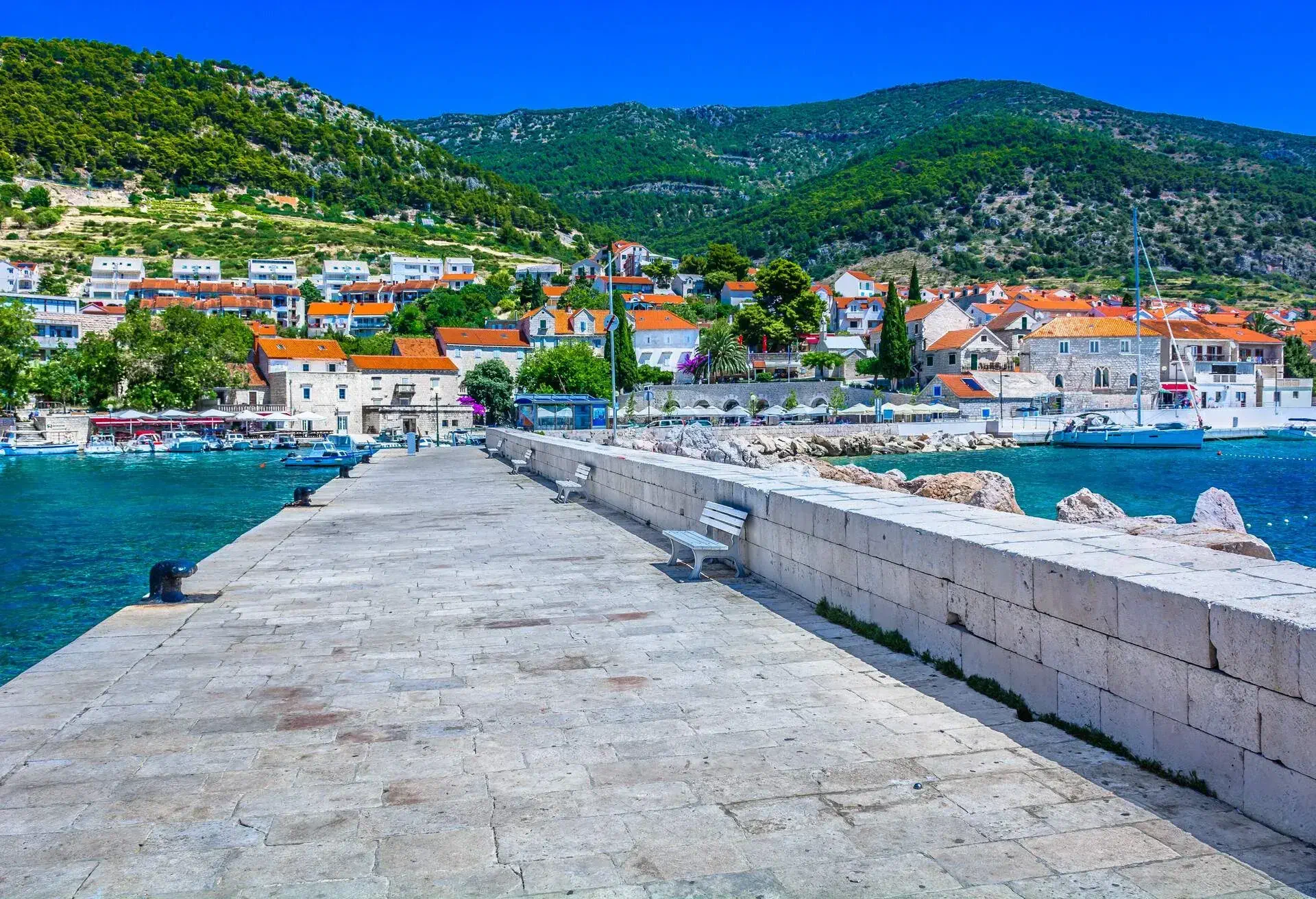
Supetar and Bol tend to have the best options for accommodation. Bracka Perla Agroresort, near Supetar, is great for families, with a pool and rooms equipped with a kitchenette. Villa Giardino, in Bol, is centrally located yet secluded, hidden away in a peaceful garden, with Zlatni Rat within walking distance.
The best islands in Croatia: Rab
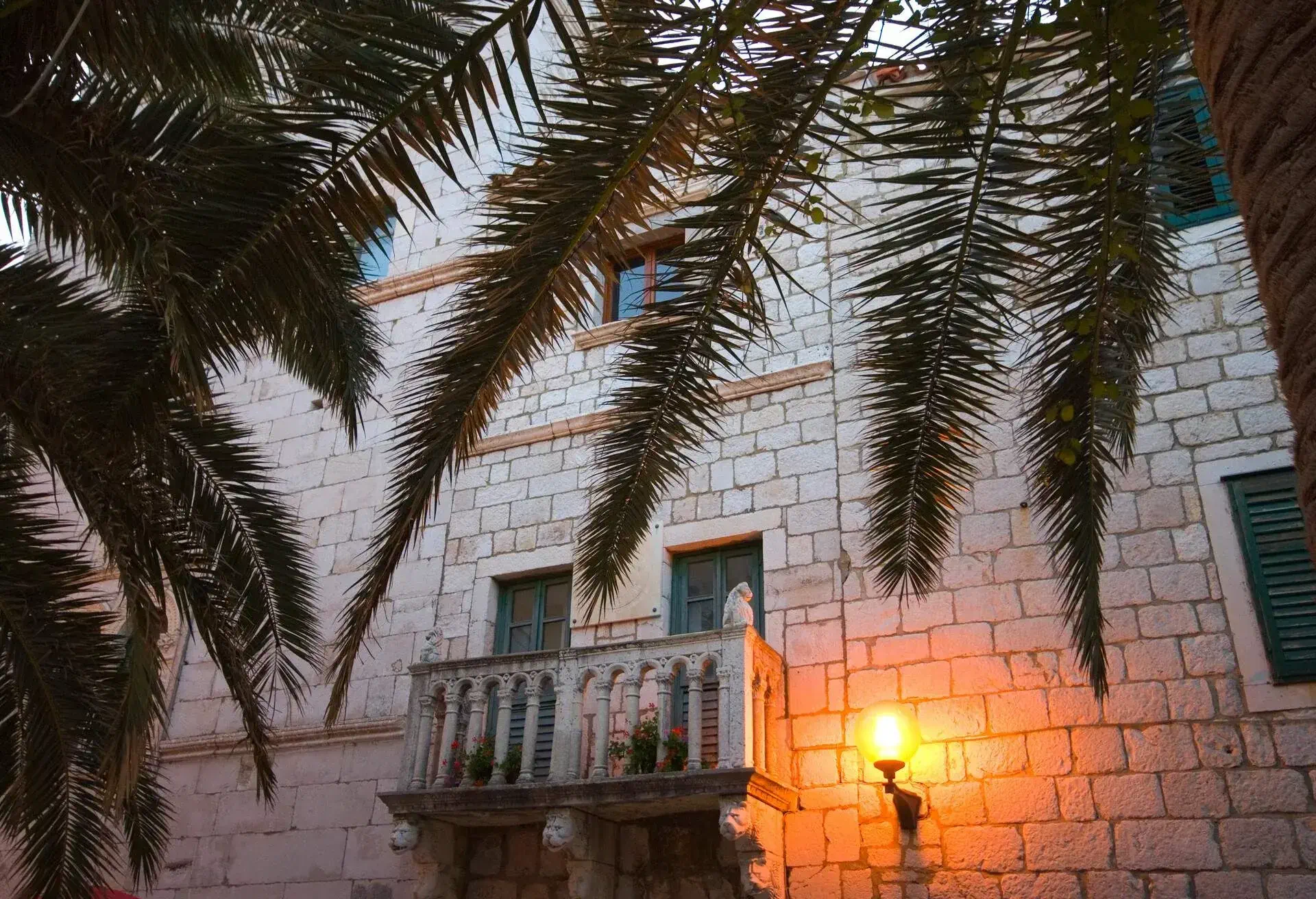
Also located in the Dalmatia region, Rab is a beautiful island known for its stunning green landscapes and hiking trails. The shallow beaches make it popular with families, while the abundance of wilderness draws in nature lovers from all over the world. This nature, including one of the last oak forests in the Mediterranean, is concentrated on the southwestern side of the island, while the northeastern side is more barren. The island is beautiful and warm any time between May and October; it is one of the region’s more popular islands, so it will be busier and more expensive during July and August.
Things to do in Rab
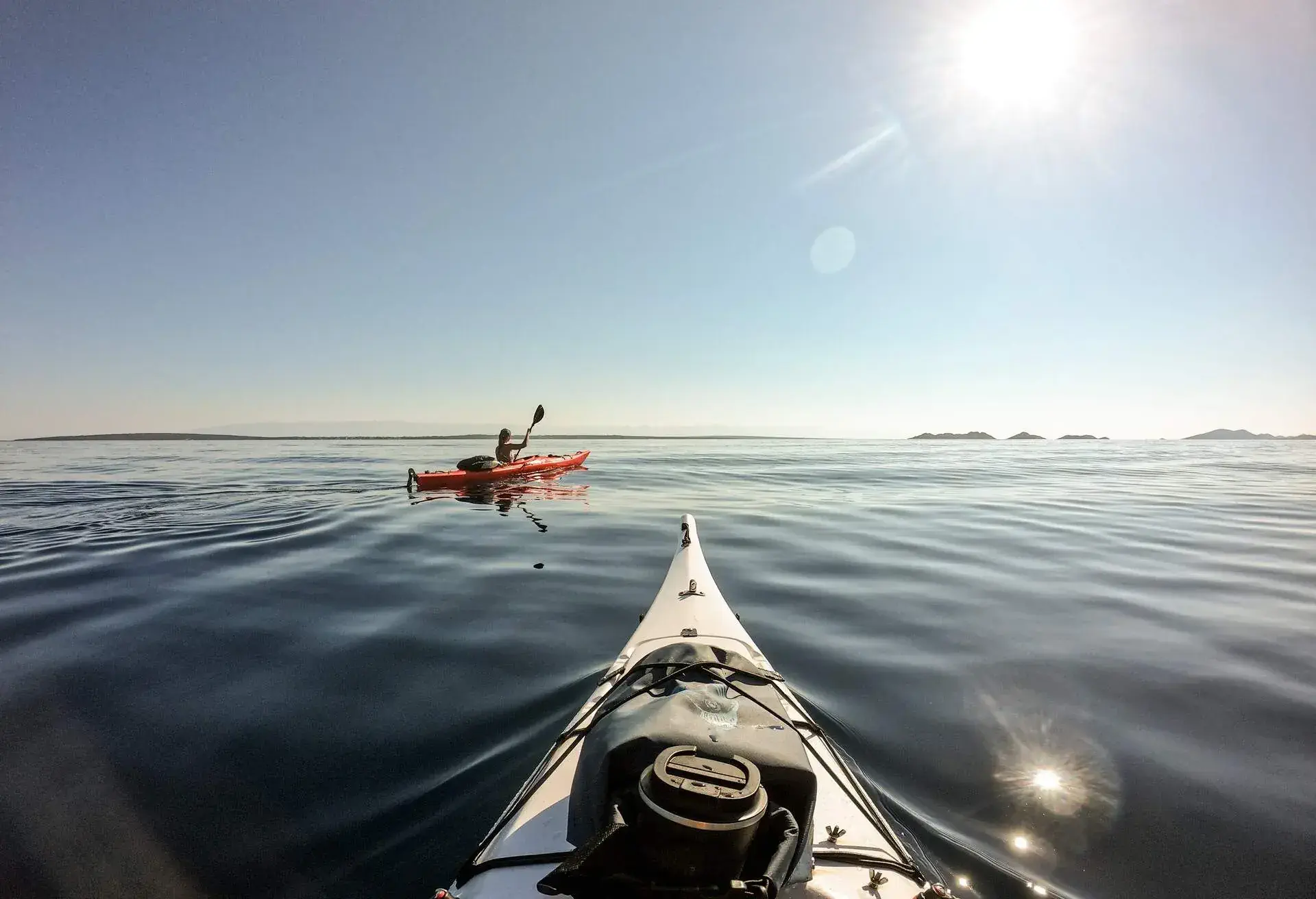
While you’re visiting Rab, you’re sure to encounter the dessert ‘Rapska Torta’, or ‘Rab Cake’. It’s a spiral-shaped cake made with almonds and Maraschino liqueur and is a must-try when you visit. If you’re visiting in late July, you might have the chance to see the Rapska Fjera. This festival includes historical re-enactments of the island’s history, a crossbow tournament, and displays of mediaeval crafts.
Insider tip: If you enjoy kayaking, the Sea Kayak Croatia company is a wonderful option offering kayak hire or tours with guides that have excellent knowledge of the area. They’re very flexible with kayakers of different skill levels.
Where to stay in Rab
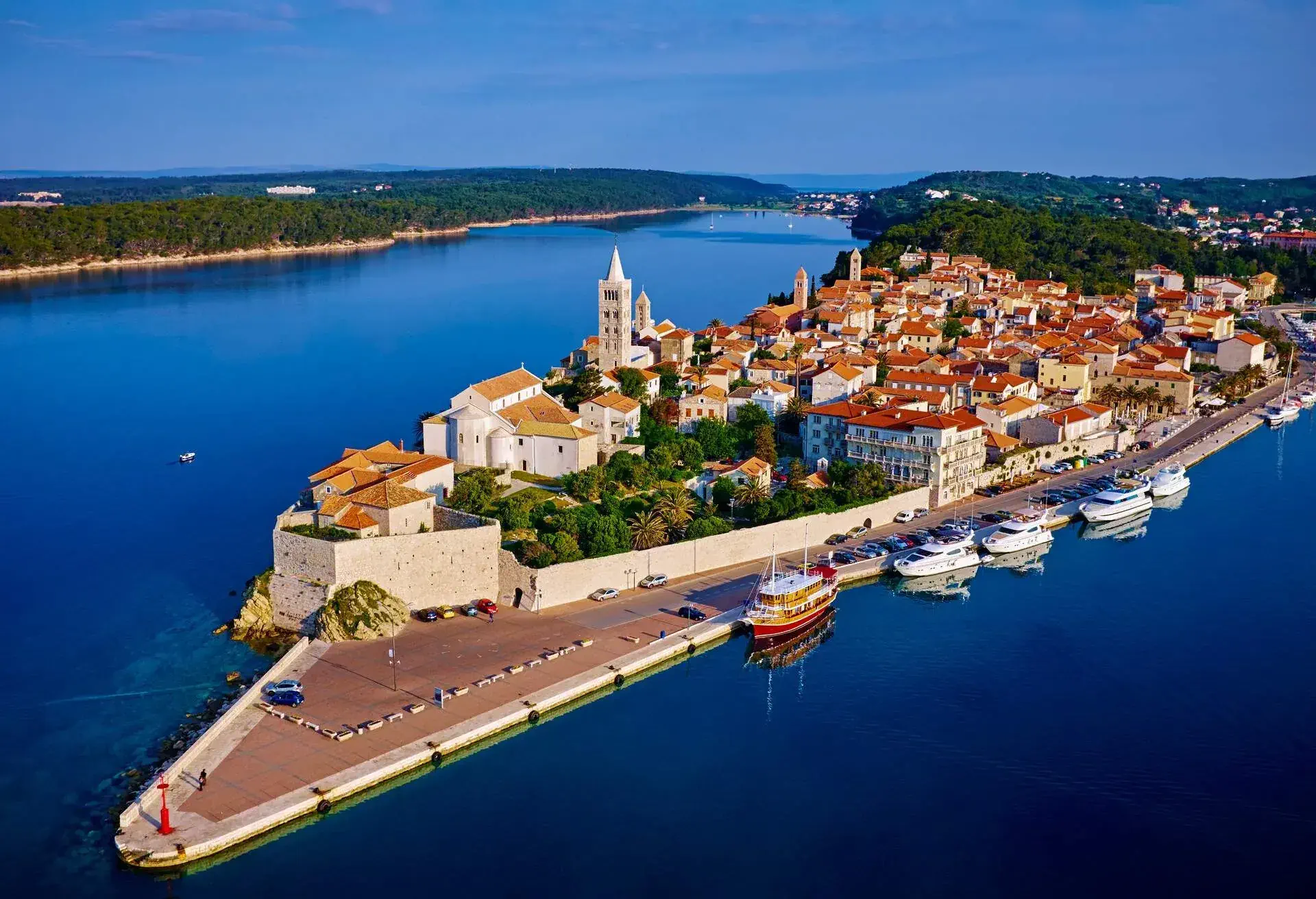
You can find a range of hotels on the island, including Carolina Hotel Rab and Valamar Padova Hotel Rab, as well as villas and apartments that are rented out by private owners. There are also a number of campsites throughout the island, including Campsite Padova III, which has its own beach attached to the campsite.
The best islands in Croatia: Mljet
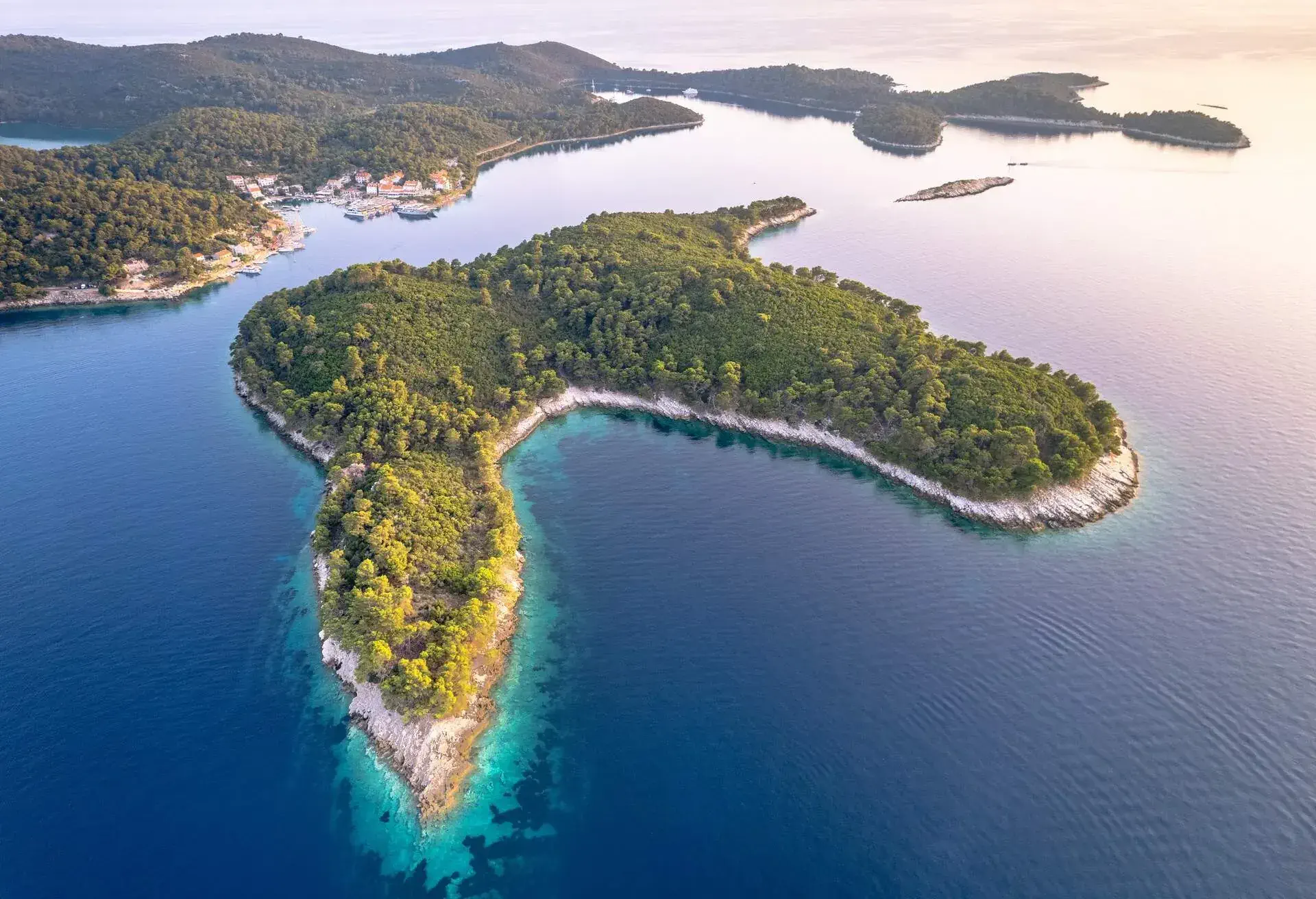
For travellers who love to sample the fresh produce of the places they visit, Mljet is one of the best Croatian islands to visit. The greenest of Croatia’s islands, the lush landscape is home to olive trees, wineries, and farms where the local produce thrives. You can reach the island each day by ferry from Dubrovnik, which takes around 1h, and there are car ferry trips from Pratprano, which take around 45min. Given the island’s high heat in summer, the best time to visit the island is in late spring/early summer, between May and June, and early autumn, between September and October.
Things to do in Mljet
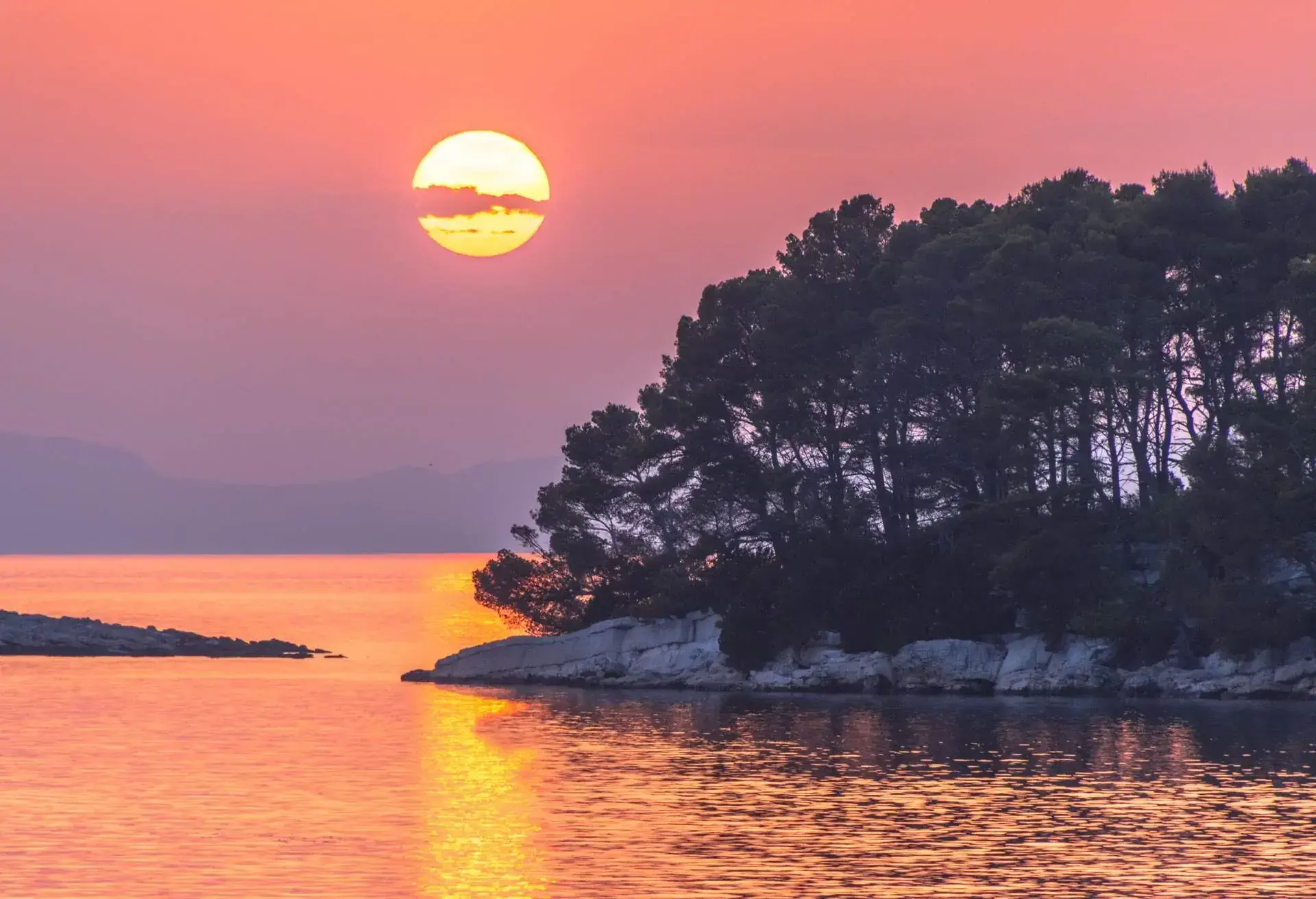
Mljet National Park is a beautiful, large park with hiking trails, saltwater lakes you can swim in, and a beautiful Benedictine Monastery. For an off-the-beaten-path excursion, Blato is a picturesque village in the heart of Mljet that’s often very quiet and peaceful. There are plenty of wonderful places to swim on Mljet, including Sutmiholjska. It’s a gorgeous beach with crystal-clear waters and the Odysseus Cave, a limestone cave whose 20-metre-long tunnel entrance you can explore either by boat or by swimming, with surrounding cliffs perfect for diving.
Insider tip: If you’re visiting in the warmer months, especially in summer, don’t forget mosquito repellent.
Where to stay in Mljet
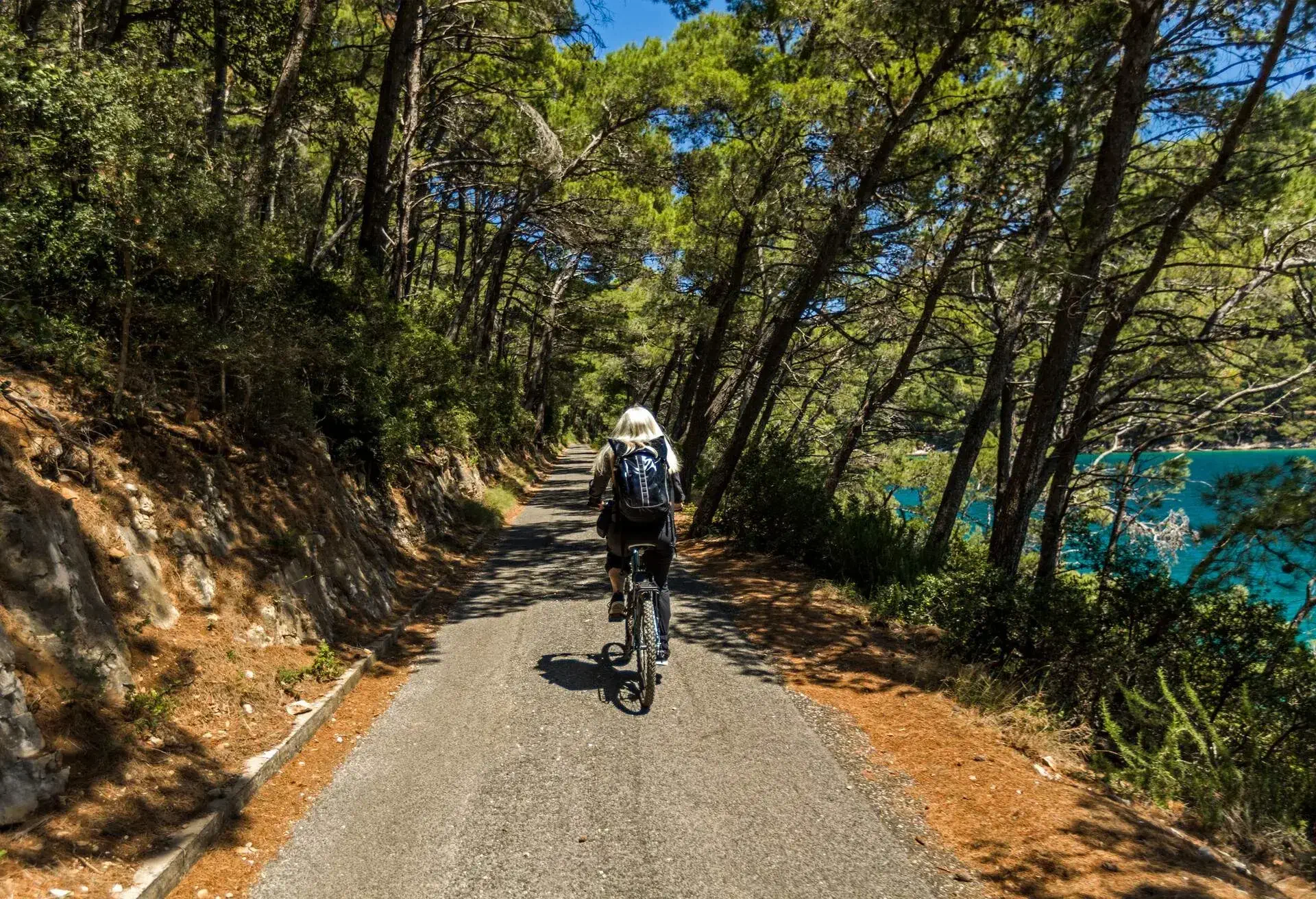
There is one main hotel on Mljet, Hotel Odisej Mljet, but there are lots of other options for accommodation on the island, with rentals and bed and breakfast accommodations available. The area of Polace is located close to the national park and has a lot of options for restaurants and shops nearby. There are also three campsites situated throughout the island, which can be a fantastic way to soak in the gorgeous wilderness.
The best islands in Croatia: Vis
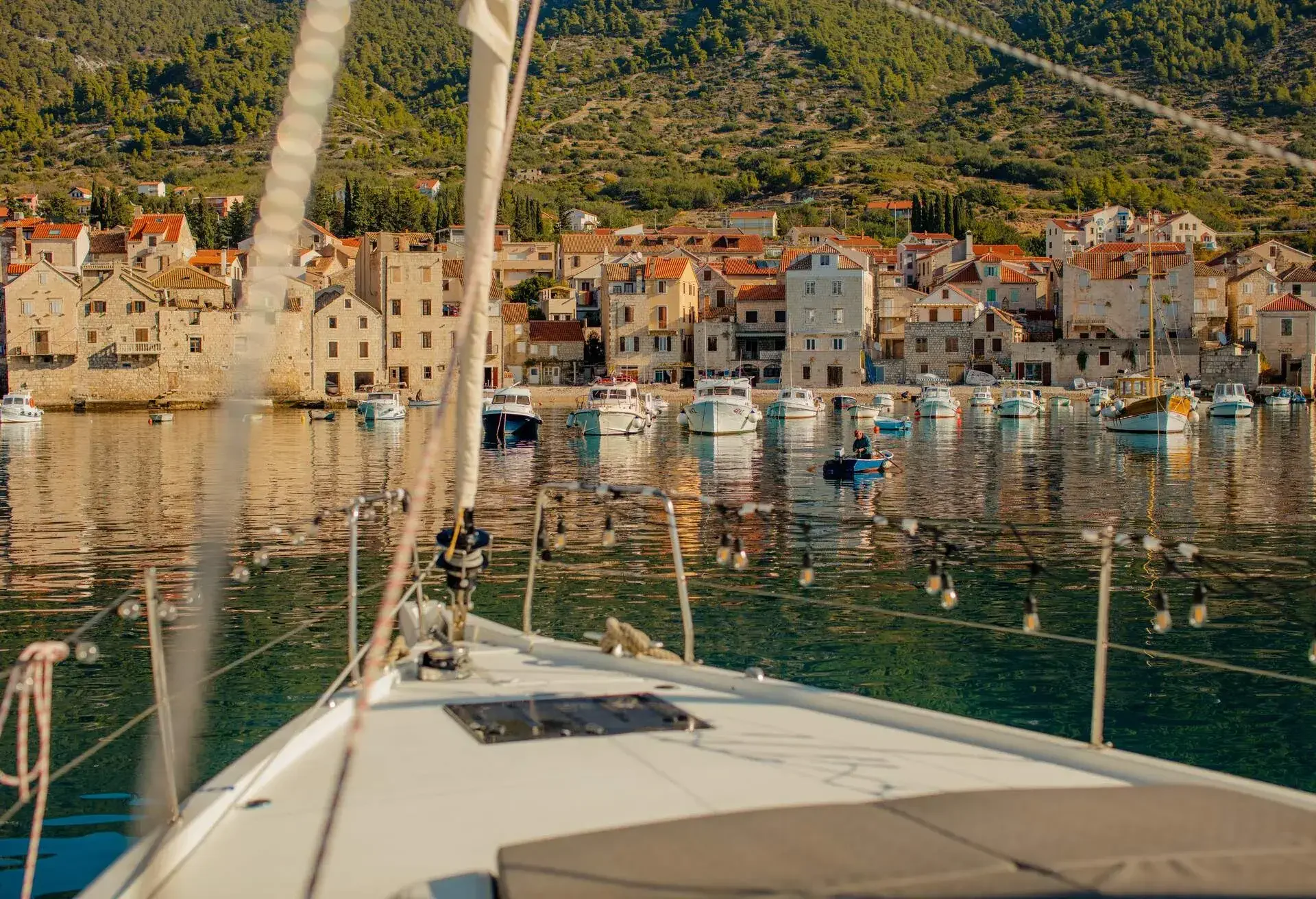
Far from the Croatian mainland and free from the party atmosphere that dominates the coastline and many of the other islands, Vis is a true getaway that can be great to slow down during your trip. The distance means that it’s not as crowded or commercial as some of the other islands, so you’ll find local produce and trade pushed to the forefront, with an abundance of family-run restaurants to choose from when it’s time to eat.
You can reach the island from Split on a car ferry or take a passenger ferry from Hvar, Milna, or Brac, though these ferries don’t run every day. Although it’s one of the less popular islands, yachts tend to visit during the summer months, so it can get busier and more expensive during July and August. Spring and autumn still provide warm temperatures and warm water without too many visitors.
Things to do in Vis
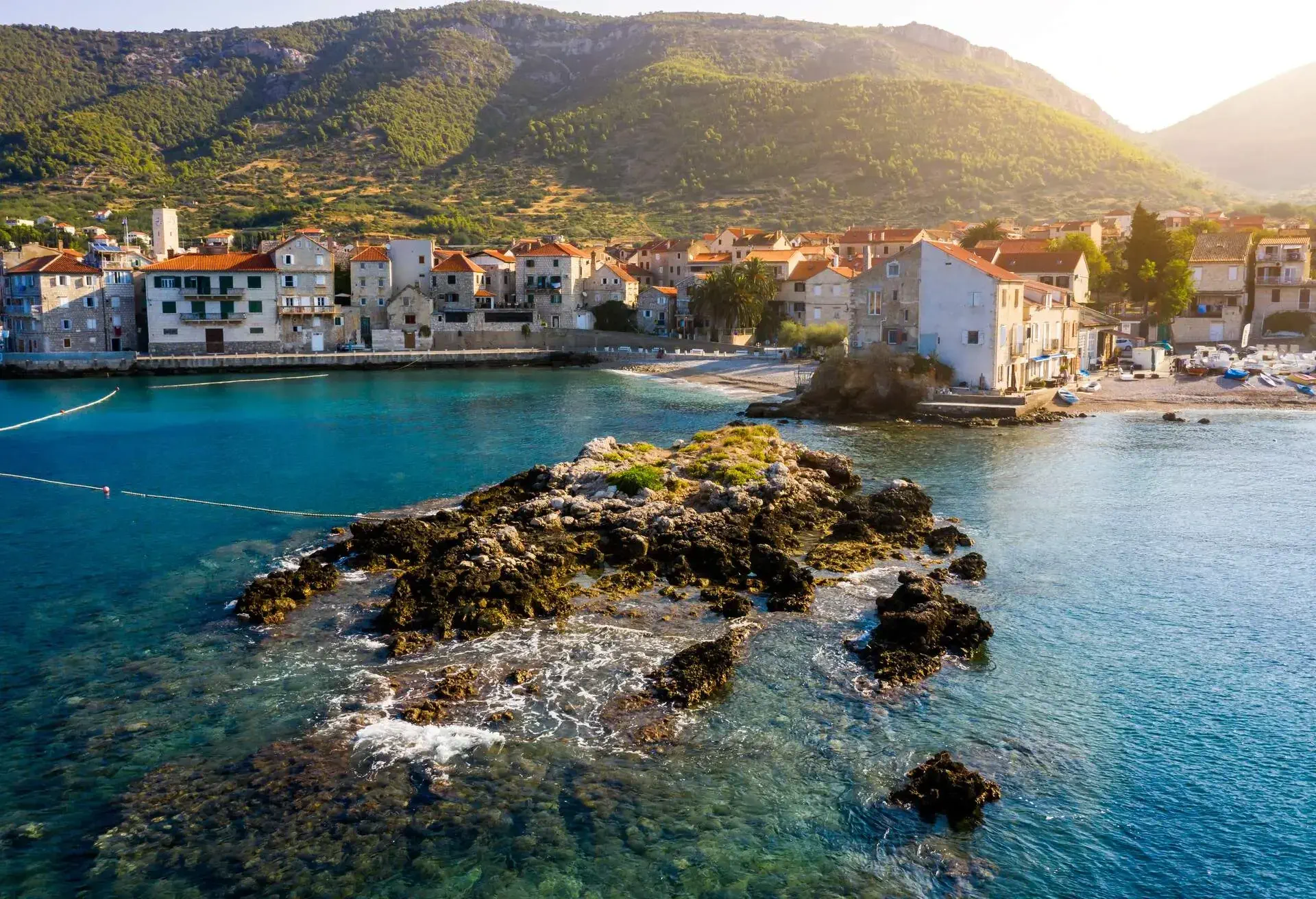
Vis is excellent for visitors who love to get active, with plenty of hiking and cycling trails available. There’s a climb up to the highest part of the island, the peak of Mount Hum; Vis is one of the cleanest islands in the Mediterranean – remember to take any litter back with you to keep it that way. One of the most unique things to do in Vis is to head to the island’s many caves and underground tunnels, which can be explored with guided tours.
This includes a submarine hangar that’s around a 10min drive from the main harbour. There are a number of gorgeous beaches on the island, but one of the best is Stoncica Bay; it has shallow water that’s perfect for kids, with a lovely pop-up beach bar at one end and an excellent restaurant at the other.
Insider tip: Visiting in spring will make it more likely that you’ll spot one (or more!) of the hundreds of dolphins that inhabit the surrounding waters.
Where to stay in Vis
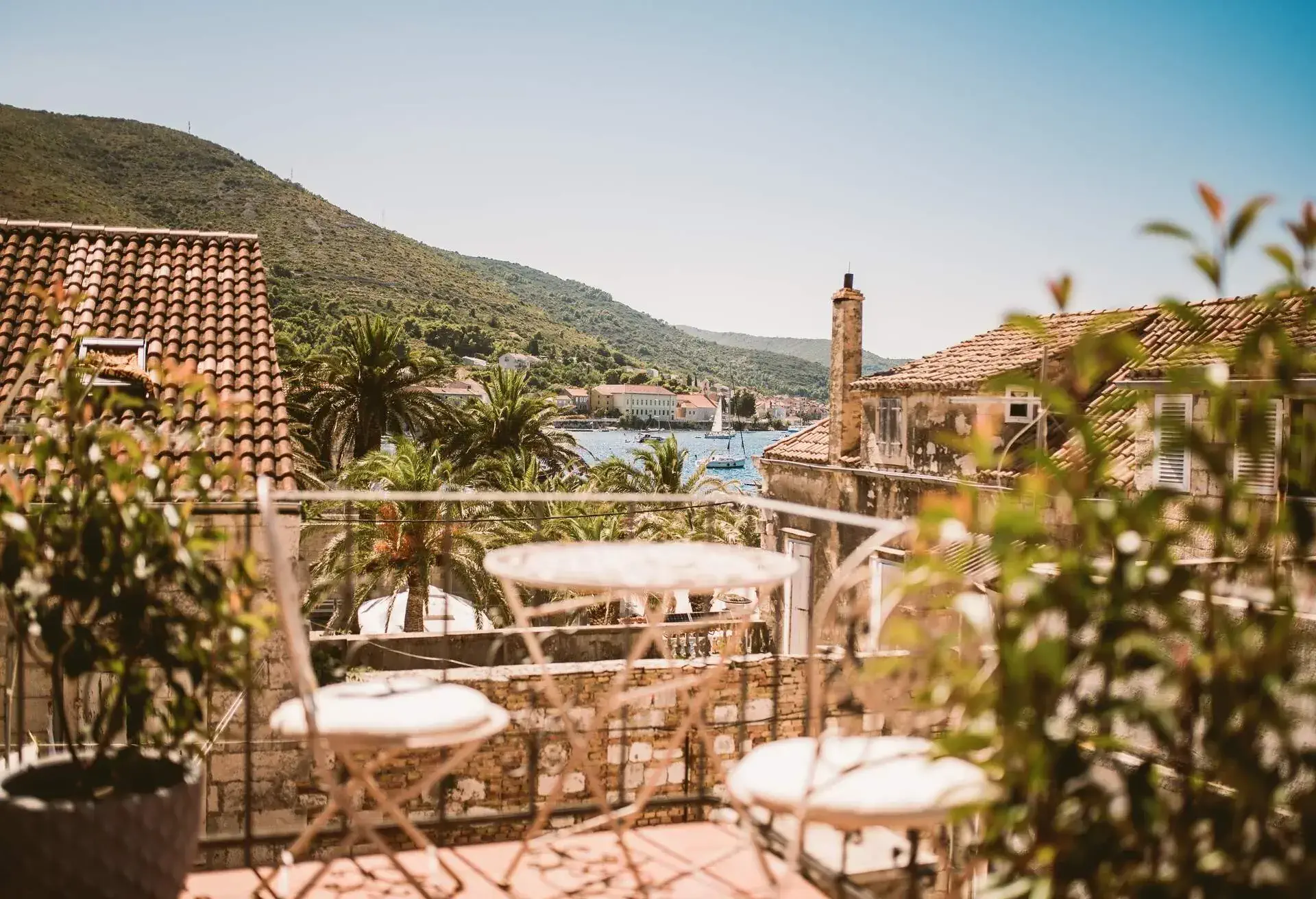
The two main towns on the island are Vis and Komiza, but there are more remote accommodation options further out from the towns, too. Vis is perfect if you’re looking for a quieter place to stay where you can take in the traditional architecture of the island. The four-star Hotel San Giorgio is one excellent option. Komiza is more lively and is close to the boat that can take you to the Blue Cave of Bisevo. Hotel Bisevo is the only hotel in Komiza, but you’ll find plenty of apartments or rooms available to rent.
Excited for your next adventure? Our friends at Where to Go, produced by the team behind the award-winning DK Eyewitness travel guides, are here to help!
Each fortnight, hosts James and Lucy talk to local experts about the destination they have chosen to call their home, exploring their personal connection to the place, what makes it so special and the best things to see and do.
Listen to the podcast below for more inspiration and tips from Croatia:

